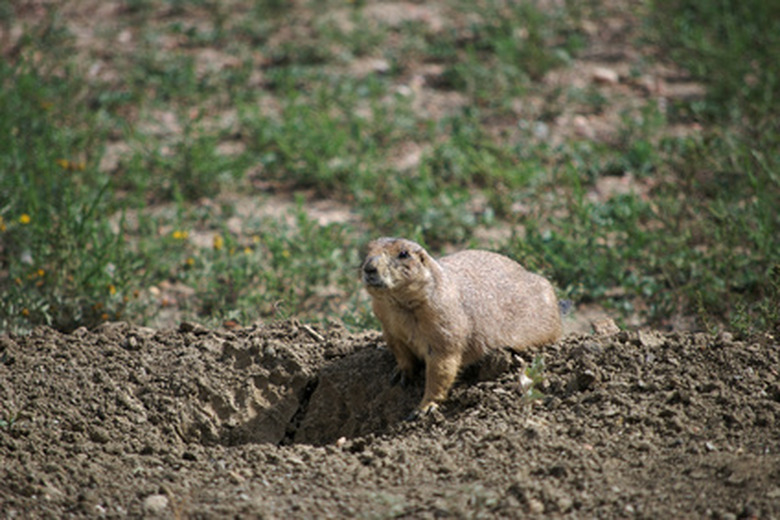How To Identify Utah Rodents
Some of Utah's native rodents are unmistakable; prairie dogs for example are unlikely to be confused with any other animal. However some, such as cactus mice and deer mice, look very similar. To add to the confusion, you have the possibility of escaped exotic pets, such as degus and chinchillas. Also, plenty of mammals resemble rodents, although they are not, including shrews and rabbits. To definitively identify a rodent, look for as many clues as possible.
Step 1
Take a photograph of the rodent, if you can. This allows you to study it more closely at your leisure. Rodents are fast and unlikely to hang around while you examine their ears and tails.
Step 2
Place the ruler next to where you photographed the rodent and take another picture. Compare the two photos to get a measurement of the animal's length. You now probably have a choice of several rodents of a similar size in the identification guide, so you need to narrow it down further.
Step 3
Look at the tail. Is it long, short, hairless, furry or very furry? You are now able to rule out several more rodents. For example, a rodent with a long tail is not a vole.
Step 4
Look at the face shape. Does the rodent have a blunt or pointy face? The face shape allows you to eliminate several more rodents. Very small rodents may be mice or voles. Utah's mice, including the canyon mouse and the common house mouse, usually have pointed faces while voles have blunt faces. Larger rodents also have distinctively shaped faces. For example the botta's pocket gopher is the same size as a Norwegian rat but looks completely different because of its rounded, almost guinea pig-like face.
Step 5
Look at the size and position of the ears. Are they positioned on the side of the head or near the top? The dark kangaroo mouse, for example, looks different to other mice partly because its ears are on the sides of its head.
Step 6
Note the site. You should now have a short list of about two or three possible rodents. Compare their distribution maps and habitat. The species most widespread in the location of your rodent is almost certainly the solution, not a species last seen in the region 50 years ago.
Step 7
Refer to pictures of other kinds of mammal in the identification guide if your animal does not look in the least like any of the rodents. For example, a tiny animal with a very pointed snout is not a mouse; it is probably a shrew.
Things Needed
- Camera
- Ruler
- Identification guide to the mammals of Utah
TL;DR (Too Long; Didn't Read)
A rodent inside is probably a house mouse or a Norwegian rat
Warning
Never pick up a live or dead rodent with bare hands because of the risk of disease.
Cite This Article
MLA
Willson, Judith. "How To Identify Utah Rodents" sciencing.com, https://www.sciencing.com/identify-utah-rodents-7827442/. 22 November 2019.
APA
Willson, Judith. (2019, November 22). How To Identify Utah Rodents. sciencing.com. Retrieved from https://www.sciencing.com/identify-utah-rodents-7827442/
Chicago
Willson, Judith. How To Identify Utah Rodents last modified March 24, 2022. https://www.sciencing.com/identify-utah-rodents-7827442/
